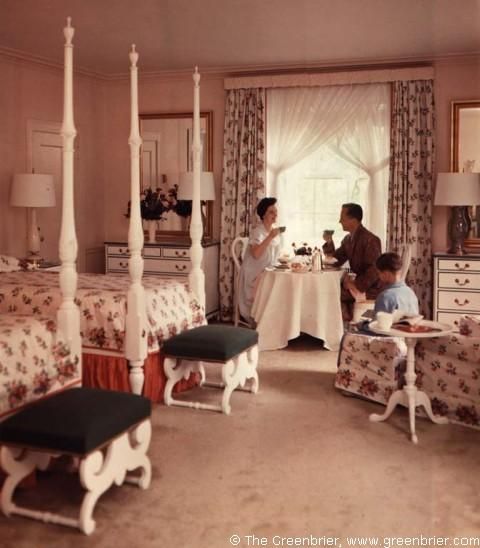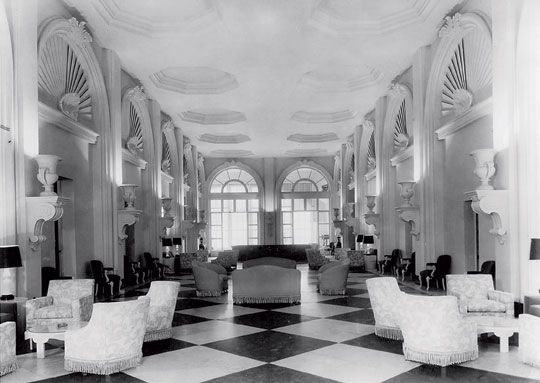Carton Varney: Helping other people to achieve. You have to be generous of yourself and your talents in this world.
You’ve been very generous as the design advice guru in your syndicated newspaper column, Your Family Decorator…
I like to write from the hip about how I feel. When I began, I took over the column from Dorothy and I gave advice like the fact that an end table should be same height as sofa arm. I write about good rules for basic reader and I write for my marketplace… places like Akron and Boise. You know, I never write down to people because I like to inspire.
Tell me about your own world…
I don’t live a very social existence in New York. As a parent with three sons to raise, I kept out of the scene and focused my attention on being an educator. That was the real key to success for me. I’ve always furthered my mindset into learning other things that make me more well- rounded. And it made the rest of the world available to me.
You inspire so many with your use of color in public spaces. Why are you such a big advocate of that?
When you go to a resort, you go to feel good. And to see the hibiscus flowers and to feel like you are escaping. Which reminds me of the time when Dorothy designed a hospital. She actually checked in for a few days to see what it would be like to stay as a patient there. She saw, for example, that the ceiling should be painted a cheerful color since that’s what the patients saw a great deal of while they were recuperating.
Ms. Draper had some rather specific ideas about color, didn’t she?
She said ‘Women don’t look good in light green rooms.’ So as you can imagine, we did very few light green rooms. She loved using pink, though. It became a signature color.
But it was never a shocking Schiaperelli Pink. Dorothy’s pink was more user-friendly than that. To me, color is important more than ever in the world right now because the world is going through some tough times.
What’s the wildest color combination you ever created?
I once did a dress salon for Sarah Frederick’s on 57nd street (in Manhattan). I painted all the walls purple. And the trim was done in white. Then I had a purple, shocking pink and white bamboo-patterned carpet. The ceilings were painted aqua blue. With criss-crossed organza draping in the window. In the end she liked it. I always feel that color in a room is what’s supposed to be projected upon you. Rooms talk to me through color.
Sounds very Draper in spirit. What did you glean most from your great mentor?
I still channel her every day. And sometimes we have fights. I got from her the vision that I have to walk to my own drummer. So many people don’t. We clicked because she was getting older and saw potential in me. She really taught me how to decorate around personality. People asked me why I never changed the name of the company. I would never do that…we were already established as a brand.
That brand extended to designing apartments for stars like Van Johnson, Judy Garland, Ethel Merman, among many others. Any insights you want to recall?
Van was a dear man. So talented and he still has great style. Garland was something else. You know she didn’t have any eyebrows – they were painted on. So the first time I saw her without them painted on it was quite a shock. Merman had a brassy style. When we first worked together we did bright, royal blues and golds. Toward the end of her life, she mellowed a bit. Fay Wray was also a client I was fond of. When I asked why she was doing her apartment at her advanced age – she was about 90, she told me ‘I buy new things because I like to see new things. It makes me feel alive even though most people think I’m already dead.’
Do you have a favorite design project of your career?
Well, I’d say that having the White House for the Carters was a great coup. You don’t have to be the White House decorator more than once to make an impact in your career. Then I did the Vice President’s house for Dan Quayle. And I loved all the hotels we’ve done.
What is your most fun project right now?
I can’t divulge too much, but we are working on the Dorothy Draper story as a film. It’s based on my books. Hollywood has optioned it.
Sounds like a great time. Is it in casting stages…who would you see playing Ms. Draper?
Only A-list actresses. I’m just sorry that Rosalind Russell or Joan Crawford aren’t around because either one would have been perfect in the role. Let’s just say it’s an actress who recently got acclaim for doing a period role.
I’ve figured it out and I won’t tell anyone…
Don’t you dare! It covers the period of Dorothy’s life in the 1940s and 1950s, so it will be fun.
Are {you} portrayed in it? Let me guess…by Jake Gyllenhall?
Oh, gosh, no.
I’ll ask you something every reader wants to know: what’s one great design item you like most that everyone should own?
The paper clip. Ok, seriously, the flat screen TV. It takes the bulk from a room so people don’t have to use those armoires. I don’t have to think about the word ‘armoire’ ever again. They’re always so ugly and are a cliché that’s time has past.
Speaking of things of the past, what are you going to be doing to the Stoneleigh?
We’re going to bring back the patina that can’t be reproduced elsewhere. I’m also going to change some of the configuration of the Cameo ballroom. Most people may not know the paneling was originally acquired from the Hearst collection.
You’ve mentioned that a room has to ‘talk to you’…
Yes, I have to feel a place when starting a project. I have to feel the entire environment before I begin. Then I work on it and feel as Dorothy Draper did about her designs. She said, ‘If it {looks} right, it {is} right.’
By Lance Avery Morgan
In the world of very haute style where trends, colors and shapes tend to come and go quickly, classically inspired designer Carlton Varney is helping revive the nobility of good design with a retrospective of his mentor, Dorothy Draper, in his new book, {In The Pink}. Here he reveals his movie star design secrets, his film project on his mentor’s very colorful life and why his and LaDraper’s original style holds strong today.
“I want this room to be me. I invented me,” implored silver screen movie goddess Joan Crawford to Carlton Varney in the 1960s when he was decorating her New York apartment. The glamorous residence was symbolic of Varney’s career… working with illustrious clients who have a strong point of view of how their large lives should be presented in their residential spaces. That strong, elegant design Varney’s created for them, and the world, has become affectionately referred to as The Varney Touch.
Carlton Varney is known as many things, yet he started out being known as the man who bought the design business of legendary society decorator Dorothy Draper at the ripe old age of 29 in the early 1963. Draper, who was the nation’s society decorator par excellence, appealed to the common man with her practical design advice advocated in mainstream magazines like Good Housekeepin}, as well as her syndicated newspaper column. The Martha Stewart of her day, Draper’s commissions for famous public spaces and her media appearances allowed her the platform to profess that daring originality was indeed the foundation for timeless design.
Varney continued that design ethic for entertainment legends like Judy Garland, Ethel Merman, Julie Andrews, Van Johnson, Merle Oberon and dozens more places, both public and private. On that list count the White House, the Plaza Hotel in New York and the Governor's Mansion in West Virginia, the U.S. Embassy in Tokyo, and he’s been associated with the restoration and decoration of countless hotels and resorts all over the world, including castles in Ireland, The Waldorf Towers in New York, The Grand Hotel on Mackinac Island, The Breakers in Palm Beach and the Greenbrier Hotel in West Virginia, just to name a few. The firm even designed jet interiors for Convair and car interiors for Packard Motors in the 1950s. With his own design pedigree having reached a legendary status, he remains a forward thinker, “We sell memories of rooms and events,” Varney candidly reveals.
When meeting Carlton Varney, one is immediately struck by his own personal style. He’s the type of man who has Hermes scarves refashioned as ties, wears bright colors and has the dynamic room entrance presence to make one take notice. He’s been in Dallas recently working with The Stoneleigh Residence and Hotel to bring back the glamour of Dorothy Draper’s original design for the 1920s era hotel. There’s now a condominium tower being built adjacent to it , where he’s also refurbishing the hotel’s original penthouse ballroom that boasts paneling from William Randolph Hearst’s vast collection.
“We live in a world where the word pretty no longer exists. There’s very little decorum and few even know how to set a beautiful table anymore. And they should because home is the most important place,” states Varney. Perhaps that’s why the design touch of this Manhattan-based society decorator is as far reaching as furniture, tableware, home furnishings and accessories and fabric. To make this world a more beautiful place. In his beautiful world he counts many Texans as friends, including Houstonian Lynn Wyatt, Dallasite Nancy Hammond and San Antonian Nancy Holmes. He’s the type of man who knows just about everybody and his conversations are sprinkled with names such as Cindy Adams, Liza Minnelli, Doris Duke, all of whom have been great friends.
I recently had lunch with him to discuss good design and how it applies to the modern world, as well as his new book about his mentor (he’s written over 20 on various subjects), his obsession with color and how The Varney Touch is stronger than ever.



